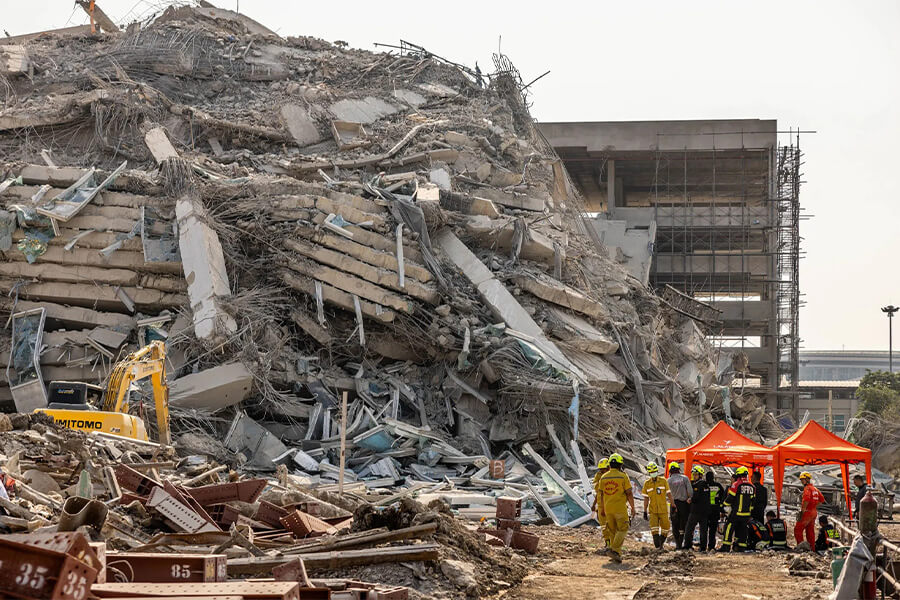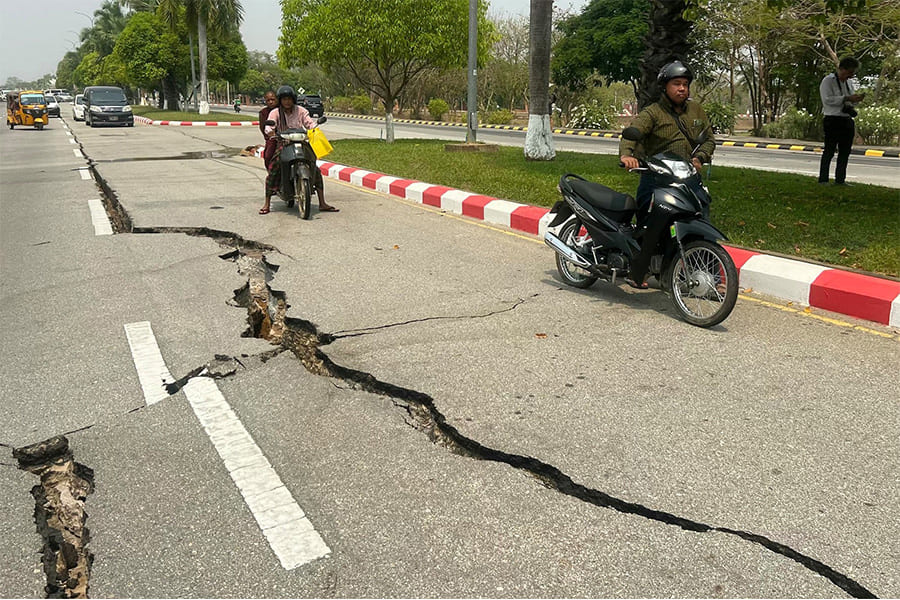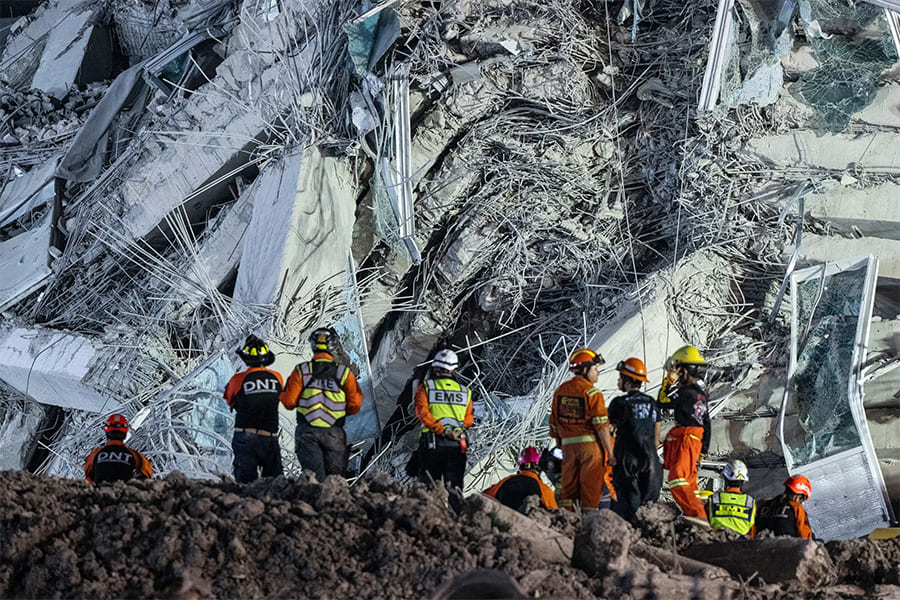According to the United States Geological Survey (USGS), a 7.7-magnitude earthquake struck Myanmar on March 28, 2025. The epicenter was located at a depth of 10 km, near Sagaing, approximately 17 km northwest of Mandalay.
Just 12 minutes later, Myanmar experienced a strong aftershock measuring 6.4. As of now, at least 25 people have lost their lives due to the earthquake, with the number of casualties expected to rise as rescue operations continue.
Sagaing Fault and Seismic Risks in Myanmar
Myanmar is one of the most seismically active regions in the world. On the Global Seismic Risk Map, the country falls within the red zone, indicating a moderate to high risk of earthquakes.
The Sagaing Fault, a major tectonic fault spanning approximately 1,200 km from north to south, is the primary cause of earthquake hazards in Myanmar. This fault has been associated with several major earthquakes in the past, including a 7.7-magnitude quake in 1946 and a 6.8-magnitude quake in 2012.
According to Shengji Wei, a researcher from the Earth Observatory of Singapore, the March 28 earthquake occurred along a segment of the Sagaing Fault. “This region has been relatively quiet for around 200 years. Based on historical records and modern geophysical surveys, we have long known that this fault segment has the potential to rupture violently, leading to a major earthquake in the near future,” Wei stated in an interview with CNN. Wei, who has spent a decade studying Myanmar’s seismic risks, confirmed that he had previously warned Myanmar’s government and local scientists about the potential danger.
A Devastating Rupture Along the Fault Line
Speaking to CNN, James Jackson, a seismologist from the University of Cambridge, explained that the earthquake was caused by a rupture along the fault line, lasting approximately one minute and resulting in significant lateral displacement on the Earth's surface. "Imagine tearing a piece of paper at a speed of 2 km per second—that’s how this earthquake caused the fault to shift," Jackson described. He also noted that while Bangkok, Thailand, is not situated in a high-risk seismic zone, the city's numerous high-rise buildings make it particularly vulnerable to distant tremors.
Myanmar’s Earthquake Sends Shockwaves to Thailand and Vietnam
The impact of the Myanmar earthquake extended beyond its borders, causing strong tremors in Thailand and Vietnam.
In Thailand, at least three people were killed, and 81 people remain missing after an under-construction building collapsed in Bangkok due to the earthquake. Authorities have since declared a state of emergency and launched rescue operations to locate those trapped under the debris.
Warnings of Aftershocks and Further Risks
Seismologists have issued warnings about the likelihood of aftershocks, urging caution in affected areas. “Myanmar is no stranger to earthquakes,” explained Professor Joanna Faure Walker from University College London (UCL). "The boundary between the Indian and Eurasian tectonic plates runs north to south, cutting directly through Myanmar. These plates move at different speeds, creating a transform fault boundary that makes the region prone to seismic activity," she told Science Media Centre.
Walker further explained that while strike-slip earthquakes (like this one) are typically less powerful than subduction zone quakes, they can still reach magnitudes between 7 and 8, causing widespread destruction—as witnessed in the recent Myanmar earthquake.
Professor Bill McGuire, an honorary professor of geophysical and climate hazards at UCL, described this as possibly Myanmar’s strongest inland earthquake in 75 years. He emphasized that the combination of the quake’s high magnitude and shallow depth significantly increased the level of devastation. “A major aftershock has already occurred, and more aftershocks are expected. These aftershocks pose a serious risk as they could cause already weakened buildings to collapse, making rescue efforts even more dangerous,” McGuire warned.



